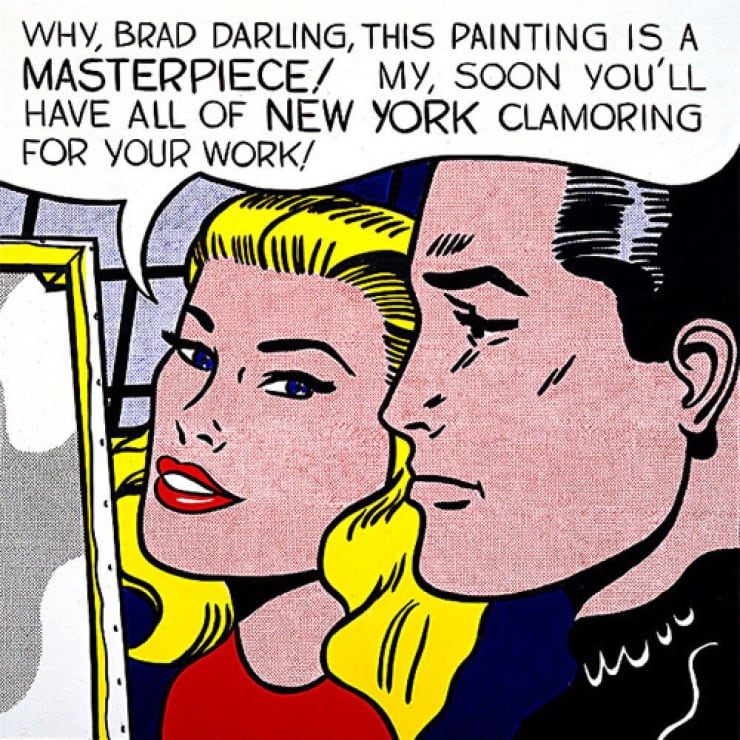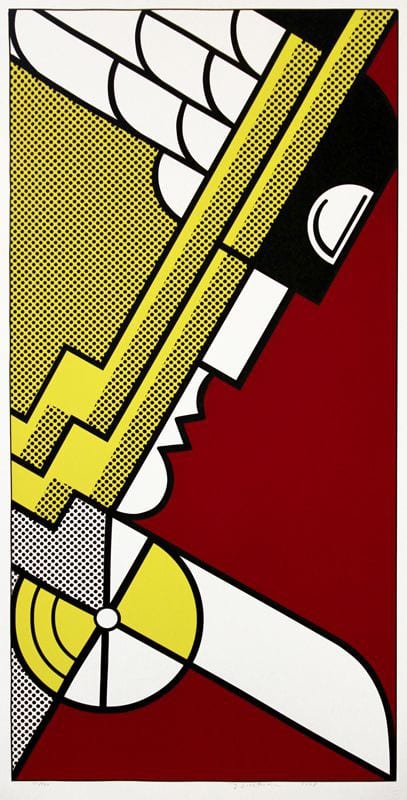In 1962, New York gallery owner, Leo Castelli, chose to represent Roy Lichtenstein. He had seen the works of Andy Warhol and James Rosenquist, and considered representing one of them, but it was Lichtenstein who made the cut.
The gallery show, which ran from February 10 to March 3, was the first exhibit of Lichtenstein’s comic book paintings, a big change from the Abstract Expressionist paintings, filled with emotional content, that gallery goers had gotten used to seeing. The comic book paintings sold out and made Lichtenstein, at age 39, a legend in the art world.
By the time Lichtenstein had his second solo show at the Castelli gallery in September, 1963, his work had been shown in museums and galleries around the country. Roy Lichtenstein’s exhibit ushered in the era of Pop Art.
I like to pretend that my art has nothing to do with me.
— Roy Lichtenstein
Drawing in the Dark
It was a series of unrelated, but significant events, that led to Roy Lichtenstein’s creation of images based on comic strips and advertisements. Lichtenstein was born and raised in New York. He showed a talent for art and music at a very early age and his talent was encouraged by his parents.
He was drafted and sent to Europe in 1945, where he drew, studied art and hoped to stay to attend art classes at the Sorbonne. His plans changed when he was called back to New York because his father was ill. After his father’s death, Lichtenstein returned to Ohio State University, where he had studied art with Hoyt L. Sherman after graduating high school and attending classes at the Art Students League. Sherman taught at Ohio State for more than fifty years. He had read a story about Rembrandt that influenced the way he taught his students.
When Rembrandt was a young artist, the story went, he was inside his father’s windmill, and noticed that when the windmill blades cut off the light, the images that he retained in his mind’s eye remained very clear and distinct.
Sherman created a Flash Room at Ohio State, a darkened room where images would be flashed on a screen and the students would have to draw what they had seen. The U.S. Navy and Army Air Corps used Sherman’s method to teach pilots and gunners to quickly identify aircraft as friendly or enemy. Lichtenstein credits Hoyt L. Sherman with having a major influence on his work, especially on his ability to create crisp compositions.
Roy Lichtenstein Etchings and Screenprints at VFA
As Roy Lichtenstein’s work evolved, he explored sculpture, printmaking and created many commissioned murals. In January 2017, Masterpiece was sold for $165 million. The proceeds of the sale will be used to create a fund for criminal justice reform.
Please contact us for more information about the works of Roy Lichtenstein available at VFA.







